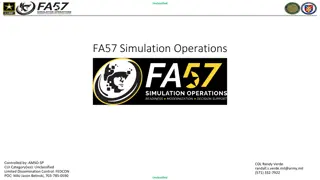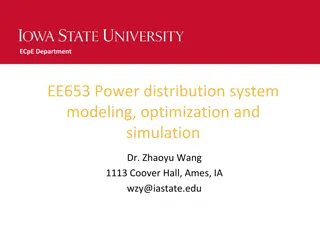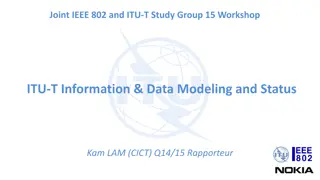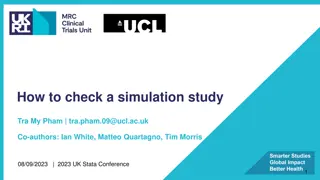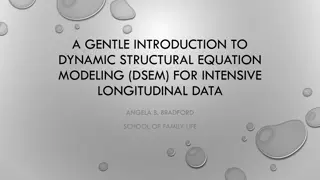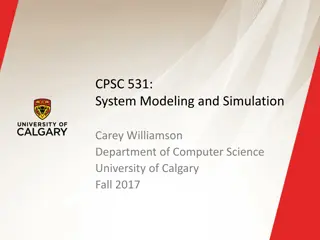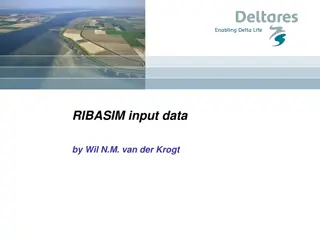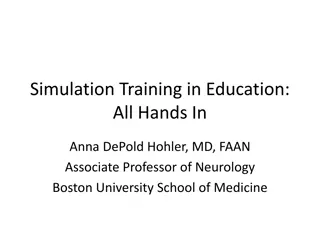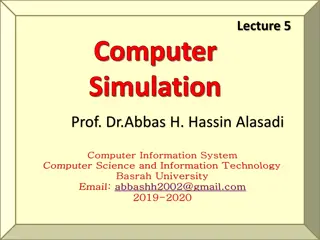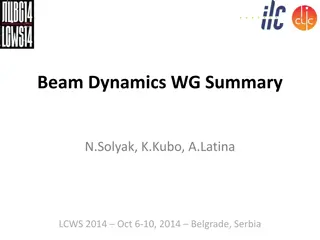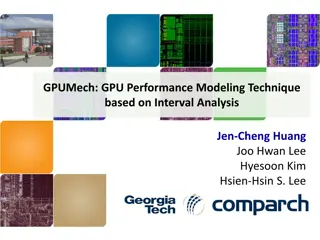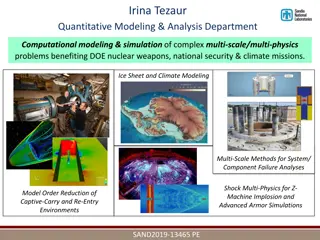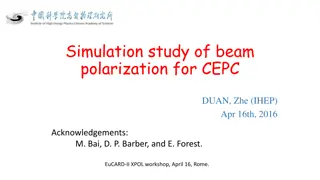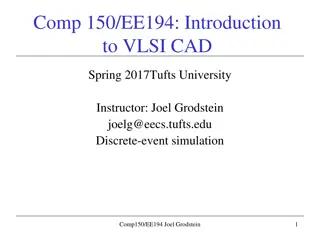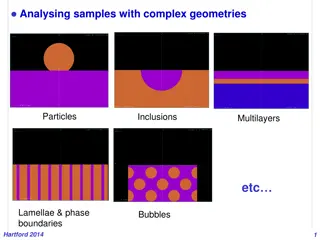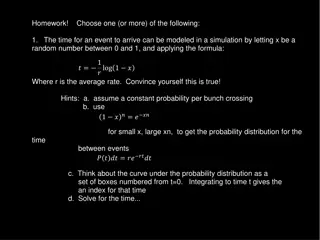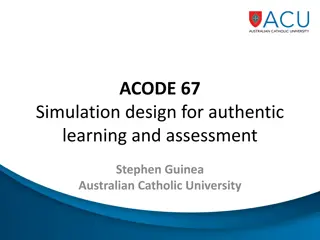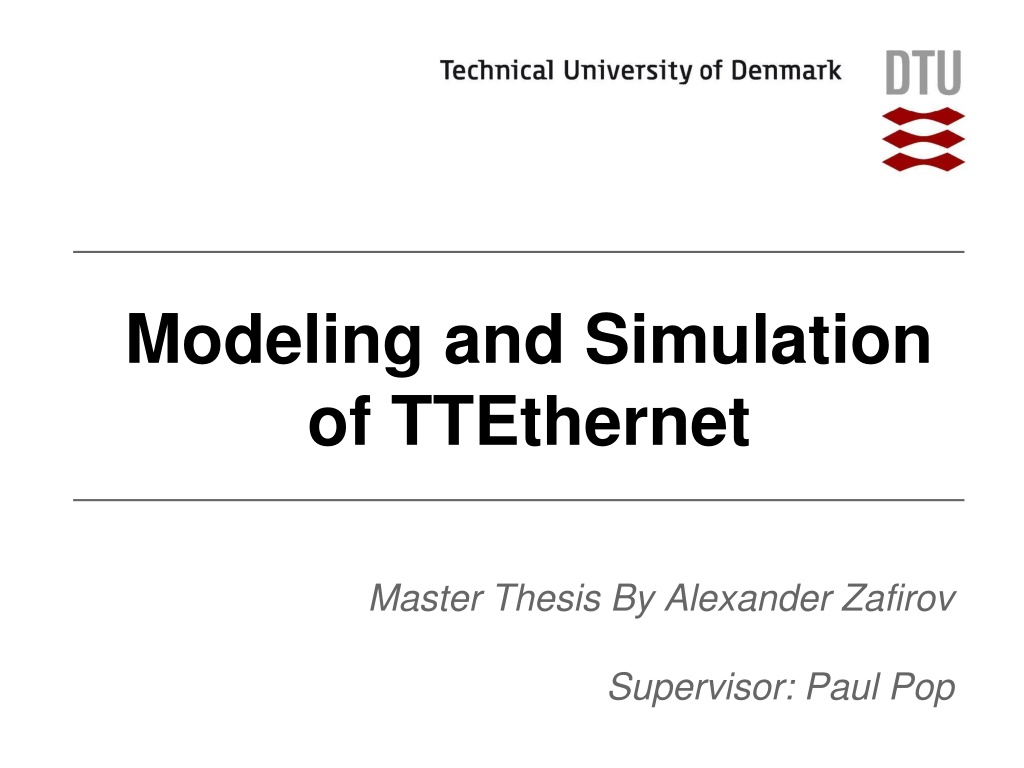
TTEthernet Modeling and Simulation: Master Thesis Overview
"Explore the modeling and simulation of TTEthernet in this comprehensive master thesis by Alexander Zafirov, supervised by Paul Pop. Delve into the architecture, objectives, virtual links, traffic classes, and more aspects of TTEthernet. Discover how this deterministic, fault-tolerant protocol ensures synchronized, congestion-free communication based on ARINC 664p7 and Ethernet standards."
Download Presentation

Please find below an Image/Link to download the presentation.
The content on the website is provided AS IS for your information and personal use only. It may not be sold, licensed, or shared on other websites without obtaining consent from the author. If you encounter any issues during the download, it is possible that the publisher has removed the file from their server.
You are allowed to download the files provided on this website for personal or commercial use, subject to the condition that they are used lawfully. All files are the property of their respective owners.
The content on the website is provided AS IS for your information and personal use only. It may not be sold, licensed, or shared on other websites without obtaining consent from the author.
E N D
Presentation Transcript
Modeling and Simulation of TTEthernet Master Thesis By Alexander Zafirov Supervisor: Paul Pop
Overview Introduction TTEthernet Simulator Evaluation
Overview Thesis Objectives Introduction TTEthernet Simulator Evaluation
Introduction Hard-real systems Distributed systems Safety-critical demands Event-Triggered approach - depend on particular event Time-Triggered approach - predetermined Mixed-criticality systems
Thesis Objectives The goal of the master thesis project is to develop a fast and accurate simulator based on the TTEthernet protocol The requirements for the simulator: model the two simulation paradigms - action- and event-oriented model all the three integration policies determine the average end-to-end delays for all BE and RC messages determine the worst-case end-to-end communication delays for the RC messages compare and evaluate results from simulation to TTEthernet analysis simulator should be designed and implemented so that it can be used inside an optimization loop
Overview Description Introduction Architecture Virtual Links TTEthernet Traffic Classes Integration Policies Simulator Evaluation
TTEthernet deterministic synchronized congestion free based on ARINC 664p7 and Ethernet fault-tolerant
Architecture End System(ES) Network Switch(NS) physical connection - full-duplex and multi-hop dataflow links virtual links
Virtual Links logical point-to-point connections in the network "tree" structures with an ES as the root node and a set of ES as leaf nodes used to route frames each virtual link carries a single message
Traffic Classes Time-Triggered (TT) offline static scheduled tables highest priority Rate Constrained (RC) bounded end-to-end latencies lower priority - transmitted when no TT Best Effort (BE) no time guarantees lowest priority
Integration Policies 1) The relay process of the L is stopped; the switch establishes the minimum time of silence on the channel and relays the H message an a priori specified duration later. 2) The switch will not forward messages at those times when a TT message is expected 3) The H message is delayed until the relay process of the L message is finished
Overview Simulator Design Introduction Simulator Output Main Simulation Loop TTEthernet Steady-state Simulation Stepwise Simulation Simulator Action-oriented Simulation Event-oriented Simulation Evaluation
Simulator Design The TTEthernet model is: discrete dynamic stochastic Two simulators of the TTEthernet protocol: fixed-increment time advance approach (action-oriented paradigm) next-event time advance (event- oriented paradigm)
Simulator Output Virtual Link Dataflow Link Dataflow Link es1,sw1 sw1,es3 vl1 es1,sw1 sw1,es3 vl2 es2,sw1 sw1,es3 vl3
Stepwise Simulation Command Action start the stepwise simulation begin pause the stepwise simulation pause resume the stepwise simulation continue stats produce csv file and gantt chart exit permanently stop the simulation
Event-oriented Simulator Events: ARRIVAL_RC_BE RELEASE_RC_BE RELEASE_TT FINISH_TT FINISH_RC_BE SILENCE
Overview Introduction Integration Policy Comparison TTEthernet Action- vs Event-Driven Simulation Orion Topology Comparison Steady-state Simulation Simulator Analysis vs Simulation Evaluation
Evaluation all three traffic classes with all integration policies run for 10 simulation cycles of the action-oriented simulator two simulators run for 10, 100 and 1000 simulation cycles with the Timely Block integration policy with a single test case from 10 to 4000 simulation cycles of the action-oriented simulator with the Timely Block integration policy of a single test case action-based simulator run for 500 simulation cycles with two real world test cases based on the NASA's Orion Crew Exploration Vehicle TTEthernet analysis and 1000 simulation cycles of action-oriented simulator with 10 test cases
Integration policy comparison Frame Timely Block [s] Shuffling [s] Preemption [s] 118 300 150 tt1.0 113 261 160 tt7.0 118 192 140 tt35.0 1126 547 252481 rc7.0 149 252149 214 rc22.0 200 252137 261 rc28.0 769 289 300 be11 885 446 467 be13 965 292 252321 be20
Action- vs Event-Driven Simulation Simulator runs Activity-oriented [s] Event-oriented [s] 232 2 10 1887 18 100 24189 180 1000 Event-driven simulation advandates: TT frame's sending and receiving times are initially inserted sorted into the queue - saves time on inserting and sorting the queue for each TT instances local sorting - includes only the events that come before the event causing the sorting and the event itself
Orion Crew Exploration Vehicle Potential Orion mission objectives (1) delivering a crew to and providing emergency return capability from the International Space Station, and (2) transporting a crew to near-Earth objects Orion utilizes TTEthernet Onboard Data Network as a priority-based network communications via traffic classes
Orion Topology Comparison ES SW Frames Frame instances Average run-time[s] Total run-time[s] Test case 31 13 180 5438 501 250572 Orion 1 31 14 180 5438 602 301008 Orion 2
Steady-state Simulation 1000/4000 1500/4000 2000/4000 2500/4000 3000/4000 3500/4000 8.55 5.61 3.49 1.75 1.44 0.96 Percentile difference
Analysis vs Simulation Test case delay[%] analysis - very pessimistic WCD for RC frames due to the lack of execution time simulation - relatively optimistic due to small number of simulation cycles performed 1 21388.23 2 22101.10 3 40357.05 4 66831.41 5 50209.40 6 109484.76 7 156453.61 8 24770.09 9 167413.91 10 116517.49
Thank you for the attention


